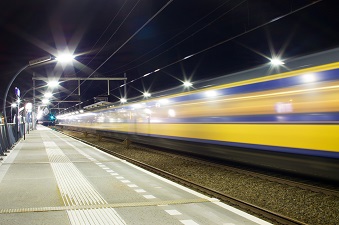On track for sustainable energy use

Related topics
Innovation Transport Societal Challenges Smart, green and integrated transport Belgium Czechia France Germany Italy Spain Sweden United Kingdomdate: 07/05/2015
Project: Sustainable and intelligent management o...
acronym: MERLIN
See also: CORDIS
Like every other sector, the rail industry needs to use energy more efficiently to cut emissions and save resources. But because rail systems are very complex and trains travel across countries with different energy markets, it can be hard for rail companies to spot energy-saving opportunities.
To help improve rail transport’s sustainability, the EU-funded MERLIN project is developing two smart decision-making tools. One analyses rail energy use in real time and helps plan energy buying, the other helps design energy-efficient networks.
Unlike existing rail energy management software, these tools look at all aspects of a network’s energy use, including the costs and emissions related to traffic peaks.
Franco Cataldo, MERLIN coordinator at the Belgium-based Union des Industries Ferroviaires Européennes (UNIFE) until November 2014, says the project’s tools could cut railways’ energy use by up to 10%, if implemented in full across a network. He adds: “Rail is one of the most energy-efficient transport modes in Europe. This enhances it, making it even more efficient by looking at how networks and operators use energy across the whole system.”
“MERLIN looks at how different aspects of a rail system work together,” says Cataldo. “We are mapping out the different players, what types of information need to be exchanged and specifications for energy measurement tools for the whole system.”
Smart tools for savings
The energy-analysis tool – the operational software – assesses how train systems use power in real time so that a network company can meet its pre-arranged energy targets.
The software gathers data about trains’ energy use from on-board units, sends them via radio link to a track-side analysis unit every 15 minutes and checks them against the targets. If targets are being missed, the software informs the on-board equipment, which then decides how to reduce power consumption.
Another part of the program helps train operators choose energy suppliers and therefore cut costs, rather than always using the default supplier chosen by network operators. “This is allowed under energy liberalisation legislation,” says Cataldo, “but is difficult to do without the right tools.”
A strategic decision-making program also suggests how to save energy through network design when upgrading or planning new infrastructure. Users enter their plans or needs, which the tool processes to recommend energy-efficient features, taking into account their cost and the likely savings they will give.
When using the strategic tool at the design phase, network companies can also analyse their energy use to decide whether to invest in technology that lets them store cheap off-peak energy.
The project is currently checking these programs for bugs and testing them against real-life scenarios based on data from project partners. The goal for the end of the project, says Cataldo, is to produce publically available results that are reliable enough for companies to use in commercial products.
Setting standards
To support better integrated rail energy use, MERLIN is also helping build technical and business standards for the rail industry.
The team is submitting recommendations to the European Committee for Standardisation on how to model the relationships between energy-use in different parts of an entire railway network, as part of a standard system for measuring rail energy use.
Cataldo also hopes that the project can contribute to the International Electrotechnical Commission’s efforts to develop international standards on rail energy use.
On business standards, Cataldo says: “If you are saving energy, you need to share the costs and benefits fairly. We propose a model that allows this.”
The project also plans to publish advice at the end of the project on how operators, infrastructure managers and power suppliers could interact, including recommendations on energy trading.
